
15 minute read
Company File: SVT World
Company File
Television has always been a great way for expats and Swedophiles to keep up with events, culture and language from the old country. For the past 25 years, SVT World, the international channel from Sweden’s public service broadcaster SVT, has been providing Sweden’s top programs to viewers abroad, from Majorca (Spain is currently their biggest market) to Munich via satellite.
Äkta Människor
However, it’s only since December 2009 that viewers in the US have been able to access the service, via IPTV, and to encourage new subscribers in North America, and to celebrate their 25 year anniversary, SVT World is offering the required Settop-box (worth USD154) for free to all new US customers who order a 1-year subscription. (Visit www. connova.se for further details about subscriptions.)
SVT World broadcasts the best drama series, documentaries, reality shows and talk-shows from SVT1, SVT2, Barnkanalen and Kunskapskanalen, 24 hours a day, with prime-time shows adjusted to viewers’ time zone. However, North American viewers also have a ‘catch-up’ function, allowing
Allt för Sverige
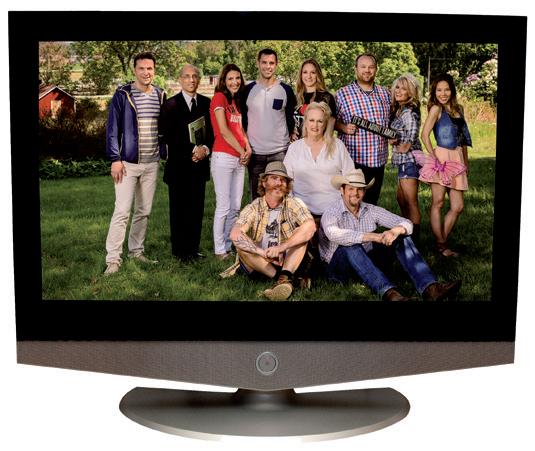
viewers to watch anything that’s been shown in the past 48 hours, anytime.
‘You can be watching Melodifestivalen at the same time as your friends back home in Sweden,’ says SVT World’s David Hagen. And while hit shows like The Bridge may be snapped up by other foreign networks later, you’ll always see them first on SVT World. (Nb. the streaming website SVT Play only shows locally in Sweden, so is no substitute for SVT World.)
Bron
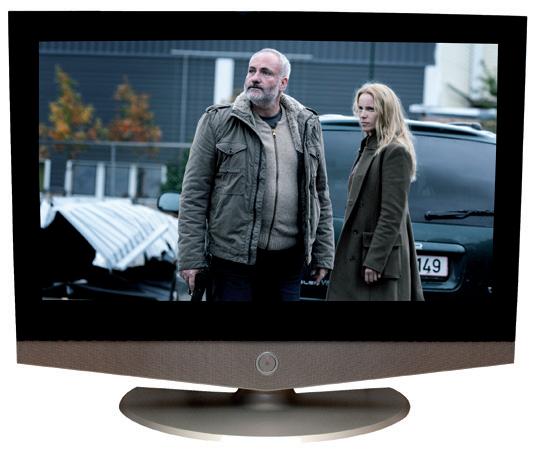
Frequent travellers can even take their Set-top-box with them, making nights in foreign hotel rooms with unintelligible local television a thing of the past. Another hit show, Allt för Sverige, which follows US contestants searching for their Swedish roots, is currently in the casting stage for series four. (See Sista Ordet (p.30) for the fascinating
[SVT World ]
behind-the-scenes story of how one of the contestants from series three discovered his aristocratic heritage.)
Another popular show, Mästarnas mästare, in which former gold medal-winning athletic stars compete against each other in a series of sporting events, begins its sixth series in March. Past participants have included Ingemar Stenmark and Magdalena Forsberg.
Mästarnas mästare
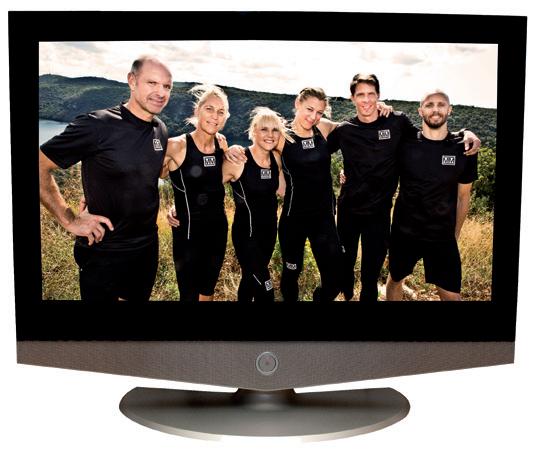
But it’s not just for entertainment purposes that access to Swedish television is so valuable, says David Hagen. ‘We were recently in the US and discovered that schools use SVT World for educational purposes, and embassy staff watch it as part of their cultural training before coming to Sweden.’ Television can be a valuable learning tool, not least for children. SVT World has an hour of children’s programming per day – a great resource for bilingual kids.
In this Swedish election year, it’s also the best way to keep up with current debates and political programmes such as Skavlan and Gomorron Sverige.
See www.svt. se/svtworld for more information.
Summer study in Sweden – the best way to learn
any years ago, more than I care to mention here, I spent a summer studying Swedish language in the medieval university town of Lund. I had been studying Swedish at my university in the US for two years and had assembled a respectable vocabulary, but I had never been to Sweden nor had I been exposed to the language in its natural setting.
As I am sure anyone who has completed an intensive summer language course in any country would agree, the experience tremendously improves your language skills. And, as I am sure anyone who has taken a Swedish summer course would also agree, spending 3-6 weeks in Sweden during the height of the summer is a truly transformative experience.
To an American, where a 100 year old building is considered ancient, the sheer age of the university and its buildings left a deep impression. The medieval town with its cobblestone walking streets and stone buildings with 12 foot deep walls were the perfect setting for enjoying coffee at an outdoor cafe. Students came from all over the world and ranged in age from 20 to 70, and we bonded in a way that only this kind of experience can inspire.
There are numerous locations and programs for Swedish language study during the summer months. Here we outline a few – selected for their unique and inspiring geographical settings.
By Susan Holmberg
Uppsala
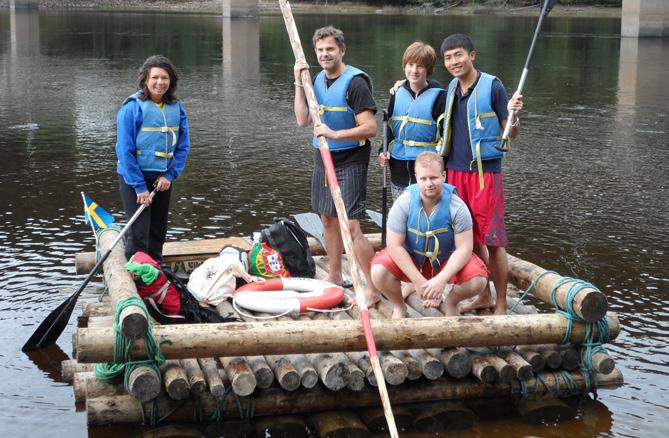
40 minutes by train from Stockholm lies Sweden’s oldest university town. Founded in 1477, Uppsala University has been an important center of learning for centuries. The Uppsala International Swedish Session (UISS) is a long-standing program that offers a wide range of courses and activities to students. Beginning in 1963, the program currently hosts between 210250 students ranging in age between 18 to 65. Swedish language courses are taught at 9 levels, from beginner to nearly fluent.

Alongside language instruction, the program offers several courses in Swedish society and culture, some of which are taught in Swedish (for those at a more advanced level). Swedish film, folk music and courses on Swedish history and society provide a broad context within which to deepen one’s knowledge of Swedish language and culture. Classes are taught 4 days per week, with the fifth day reserved for historical and cultural excursions. Students live in dormitories at the University, generally in single rooms with private sink and toilet and a shared shower in the hallway.
Among the activities one can expect beyond the weekly excursions and film viewings are Midsummer celebrations, barbeques, potluck dinners and, at the end of each three week course, a ”student gask” or formal 3 course dinner followed by a dance. Weekend trips include Finland, Värmland and, at an extra cost, a hiking trip to Lapland.
Courses begin in mid-June and run for 3, 6 or 9 weeks. The application deadline for courses beginning June 15 is May 1, May 15 is the deadline for courses beginning July 6, and June 1 is the deadline for courses beginning July 27. The price tag for the 3 week program is approximately $2,460*. The 6 week program costs $4,625 and the 9 week course costs $6,680. (www.uiss.org/index.php/en)

Lund
Located near the southern tip of Sweden is the university town of Lund. Established in 1658, Lund University is Sweden’s largest institution of higher education and research.
The summer language program in Lund is operated by the International Swedish University Program (ISU), an extension division of the university also
known as Folkuniversitetet. Three beginners’ level courses are offered, each lasting three weeks. The first begins on June 27, the second on July 14 and the third on August 4. Students spend the mornings in the classroom 4 days a week. Afternoons feature guided tours, guest speakers and Swedish films. Fridays are reserved for field trips to surrounding points of interest such as the island of Ven and the naval town of Landskrona.
The deadline for applying to the 2014 Lund summer language program is June 20. The tuition fee for the first two modules is approximately $1,150, while the third module costs less, $830, but does not include field trips or other activities. (www.folkuniversitetet.se/skolor/Internationellaskolor/ISU/Our-courses/SummerSwedish-Language-Program/)
Tjörn

Situated just 36 miles north of Göteborg on the Bohuslän coast is the beautiful rustic island of Tjörn. A haven for boat lovers during the summer months, students here can study Swedish language and enjoy Swedish culture both inside and outside the classroom.
The Tjörn summer program is a 3 week course that has been operating for 30 years. On average it hosts between 40 and 45 students who are divided into three groups based on their language level. Students spend 5 hours in class Monday to Friday. While the primary
Photo: Tjörn Kommun
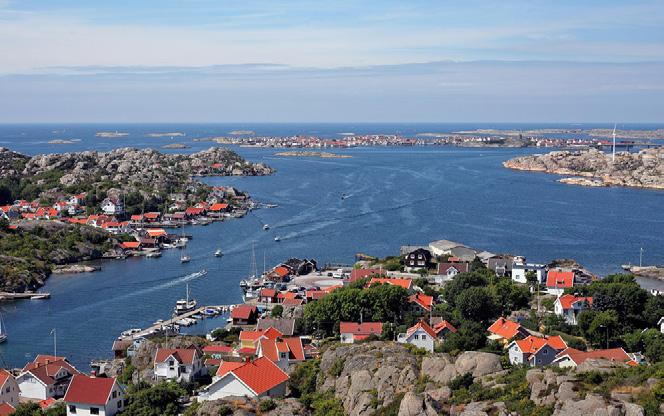
focus of the curriculum is Swedish language, lessons on Swedish culture and society are regularly featured. Day trips include an excursion to Göteborg and another to the island of Marstrand. Field trips on Tjörn itself include a visit to a local workplace and an evening visit with a Swedish family. In the evenings Swedish films are shown.
In contrast to most other programs, the teaching staff is comprised of international instructors who teach Swedish language and culture abroad (primarily North America). Students live in the dormitory of the Bilströmska Folk High School. Each room has its own bathroom with shower. The price tag for the three week course, including lodging, meals and associated activities, is approximately $2,000. The application deadline is May 31. (www.sverigekontakt.se/?id=626)

Gotland
For those seeking a highly personalized training regime that focuses heavily on speaking skills, the island of Gotland off the east coast of Sweden might fit the bill. This program has been running for the past 5 years and is part of the Swedish Express program that also operates in Göteborg and Stockholm. The size of the class as well as its duration and contents stem from the skill level and needs of the individual students. It can be as short as one week with just one or two students (30 hours of instruction), but during this time the student receives intensive verbal skill training. Outside the classroom the practice continues as students and teacher continue to interact, applying the thematic lesson from the classroom (i.e. food, eating) into the real world.
In addition, Gotland offers plenty of beautiful scenery and fascinating places to visit, some of which are included in the course. The main town is the medieval fortress of Visby. Many students stay in a hotel in Visby, while others prefer a youth hostel or staying with a Swedish family. Program organizers will help arrange accommodations according to student preferences. There is no official deadline for applying to the Gotland course, though it is recommended that prospective students get in touch as soon as possible in order to secure a place to stay during the busy summer season. The best way to do this is to email Martin Ohorn at info@swedishexpress.eu.

City Wall of Visby, Gotland. Photo: Tuukka Ervasti/imagebank.sweden.se
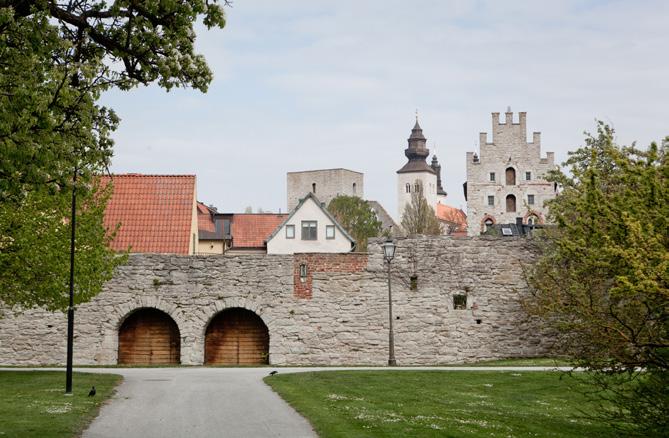
The cost varies according to the number of participants. If there are at least 3 students, the cost for 30 hours is approximately $750. If there are only one or two students, the cost is a bit more. (http://swedishexpress.eu/ Gotla.html) *All prices are US dollar conversions from Swedish Krona calculated on February 8, 2014.
INTERVIEW WITH ULF WAGNER – MICHELIN-STARRED CHEF AND EDUCATOR
Teaching the New Generation of Swedish Chefs
By Anton Fredriksson
Ulf Wagner. Photo: Stena Line 8 Entrepreneur, Michelin-starred chef and educator, Ulf Wagner is a man of many parts. Swedish Press caught up with him recently at his renowned restaurant, Sjömagasinet, to talk lobsters, Michelin stars and why his students never show up to work with hangovers. 8
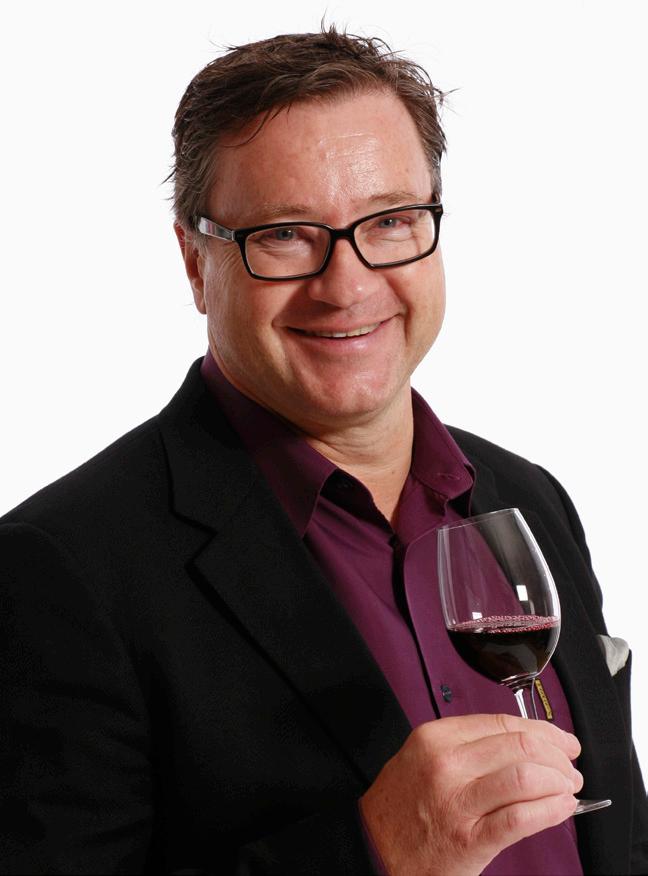
Swedish Press: You’ve worked at a number of top restaurants around the world and currently run Gothenburg’s esteemed Sjömagasinet restaurant, what brought you into this field initially?
That is an extremely long story – I’ve actually just written a book on the topic. I usually say I was born hungry. My father, who came to Sweden from France where he had worked at the Ministère de l’Air, brought with him a fantastic wine cellar. My Austrian mother was a home economics teacher.
We also did a lot of hunting. There was always food and we gathered together around the dinner table. I had my first glass of wine when I was 15 but with a few drops here and there before then. My father would always tell me about the different grapes and regions. I always knew that this was something I wanted to do for a long time but then I went to boarding school and was ultimately predestined for law studies. Finally after a few years of law I told my father that this isn’t working anymore. I wasn’t meant to be a lawyer. It didn’t fascinate me in the same way that food did.
How did your father react?
He told me “Ulf, do it well or somebody else will.” So that was my aim.
Nils-Olof Sjödén/Sjömagasinet I worked at some of the best restaurants; Carl Jan, Grythyttan. I was “bought” to Gothenburg by a big hotel chain and was head chef at Park Avenue and a few other restaurants before I got my first star in the Guide Michelin in 1999.

Lee Kearnes/Sjömagasinet

What does the recognition mean to you?
It’s all about quality. Getting a star in Sweden is equal to getting two in France. It’s much tougher in Sweden. We don’t have the same raw materials or produce but we have knowledge and we have fantastic tastebuds. When I send my students abroad, I am most struck by the positive reactions about how great Swedes are to work with. They never show up to work with hangovers. If they’re supposed to be at work at 9, they’re there at quarter to. They are interested, skilled and polite. The worst story I heard was when I sent two of my students to The Savoy in London. They were so good that the other young chefs tried to sabotage their work. Just to discredit them instead of saying, “Fantastic! Can we learn something?” I think we have a great advantage of how we look at things and adapt. We don’t have the tradition so it’s more difficult for us but we work harder.
Let’s shift over to education. You teach at the University of Gothenburg. How long have you been doing this for?
12 years. I mainly teach a course about wine. The last time we offered the course, we had 636 applicants for 24 seats, which at the time was the most sought-after course at the university. It’s called “The Marriage of Wine and Food”.
The students must love it.
Yes but the course also requires a lot of time and energy. But they want it back for this autumn.
Ulf Wagner and his team. Photo: Embassy of Sweden in London
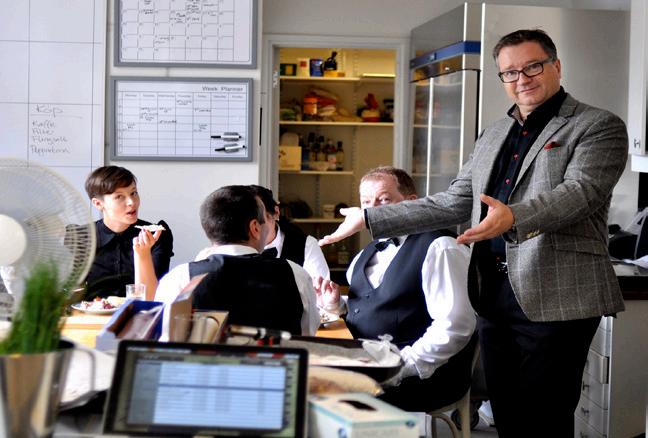
What other schools are you working with?
I’m teaching wine for a 3-year restaurant management education. It’s an academy for professional work. It’s less academic than university. It’s more tangible with a lot of practical work. You do an internship for 6 months abroad and the course is 100% taught in English.
Where are your students today?
I run into them from time and time. I was in South Africa and was heading back to the Cape Grace hotel. I stopped by the Bascule Bar and bumped into a girl who was in my course 10 years ago who is now the assistant manager there. She informed me that there were a number of my former students working nearby. My students do very well, particularly in the hotel industry.
How would you describe the Swedish food scene today? When people think of Sweden and food, they often think of meatballs. How do you get past that?
We try to go back to our roots when it comes to our cooking. Swedish cuisine is based on where we are and we are in the northern hemisphere. We are brought up with all the ingredients that nature provides us – game, fish, root fruits, grain etc. We are in the northern belt so we make beer and vodka instead of wine. And of course our food is based on that.
What direction do you see Sweden going with regards to its cuisine?
Look to the past. The French say “cuisine de grand-mère”. How did our ancestors cook? Don’t buy strawberries in December just because it’s possible. We need to go back to our roots which means going back to the seasons.
Lee Kearnes/Sjömagasinet
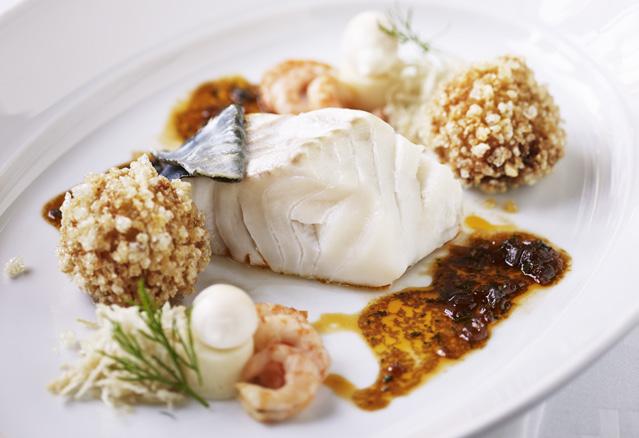
Fishing boats go out here and it takes them 2 days to catch what they need. They then come back to the harbour. By the time the fish get to the market they are 4 to 5 days old. At the same time, I can also call my agent and say that I need a live lobster from Mozambique. The lobster is caught alive, thrown on a plane and 18 hours later it is sitting in my
Lee Kearnes/Sjömagasinet

kitchen, which is crazy. It’s still alive, but it comes from the other side of the world and it’s quicker. This becomes very tempting of course, but there are a number of problems with this. First of all, it is not sustainable. As I am in the process of getting my restaurant certified as a sustainable restaurant, we have to think about these aspects as well. We don’t use fish that is red listed like halibut. A few years ago cod was almost extinct so we stopped eating it. Today there is more cod than ever so we can use it again.
We ultimately want future generations to be able to enjoy the same food we are eating today.
Absolutely. I don’t want my grandson to ask, “Oh grandpa was eating something called ‘Swedish Lobster’ what’s that?”
And finally for our readers who are interested in eating at Sjömagasinet, what can you recommend as a dish?
What I would say, is try to eat any kind of fish that comes from our area. The difference between a Mediterranean sole and its counterpart out here in the North Sea is that the sole in the Mediterranean takes a year-and-a-half to reach a kilo. It takes up to 8 years here which means all the flavours have developed over a much longer time period which means there is much more taste. The texture is better as well. Our meat is much more delicate.










